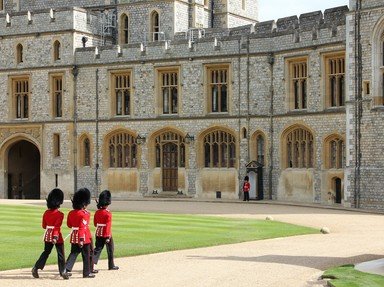Quiz Answer Key and Fun Facts
1. His Majesty's Body Guard of the Honourable Corps of Gentlemen at Arms was originally founded as the so-called "Nearest Guard" by which monarch?
2. Originally formed as a mounted unit on horseback equipped with lances, the Gentlemen at Arms was subsequently converted into a dismounted bodyguard primarily armed with which type of weapon?
3. The last time that the Gentlemen at Arms saw active service in wartime was during the English Civil Wars. One significant instance of this service came when Gentleman Matthews saved the life of the Prince of Wales during which battle?
4. The King's Body Guard of the Yeomen of the Guard is the oldest of the Sovereign's Bodyguards, and was formed following the accession of which monarch?
5. Although the corps is now primarily seen carrying a pike like weapon called a 'partizan', during its service it was equipped with what type of early firearm?
6. Membership of the Yeomen of the Guard is open to ex-members of all four of the UK's armed forces. Which was the last from which retired members could be recruited?
7. The Royal Company of Archers, the King's Body Guard for Scotland is the sovereign's personal bodyguard in Scotland. Which monarch appointed the company to that role?
8. Unlike both the Gentlemen at Arms and the Yeomen of the Guard, the senior officer of the Royal Company of Archers, the Captain-General, is not a political appointment, instead occupying a senior role in the monarch's household in Scotland. Which appointment does the Captain-General hold?
9. Although the Royal Company now wears a uniform of dark green and black, prior to this it wore one of the tartan of which Scottish infantry regiment?
10. Of the three units of the Sovereign's Bodyguard, only the Gentlemen at Arms wear a uniform of a recognisably military style. Their uniform is the 19th century pattern of which type of cavalry soldier?
Source: Author
Red_John
This quiz was reviewed by FunTrivia editor
stedman before going online.
Any errors found in FunTrivia content are routinely corrected through our feedback system.
